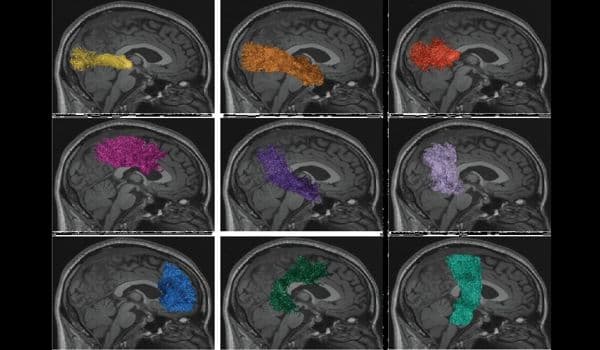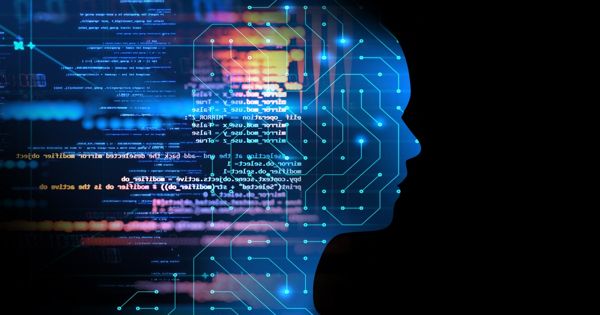People frequently consider human behavior in terms of what is happening right now, such as reading a newspaper, driving a car, or catching a football. Other aspects of behavior, on the other hand, span weeks, months, and years.
A child learning to read, an athlete recovering from a concussion, or a person turning 50 and wondering where the time has gone are all examples. These aren’t changes that people notice on a daily basis. They simply become aware that they are older, healed, or have a new development skill.
“The field of neuroscience examines the brain in a variety of ways,” says Franco Pestilli, a neuroscientist at The University of Texas at Austin (UT Austin). “For example, we’re curious about how neurons compute and allow us to react quickly — it’s a fast response that necessitates visual attention and motor control. Understanding the brain necessitates the use of large amounts of data in order to capture all aspects of human behavior.”
Over the last 15 years, Pestilli’s research has advanced our understanding of human cognition and brain networks as an expert in vision science, neuroinformatics, brain imaging, computational neuroscience, and data science.
Pestilli likes to compare the brain to the Internet, which is a powerful network of computers connected by cables that can keep many windows open and programs running at the same time. Long-distance communication between computers in different parts of the brain begins to fail if the computer is healthy but the cables are not. This, in turn, causes issues with our long-term behavior.
Pestilli and his colleagues are also interested in how biological computations change over time, such as how our brain changes when we lose our vision.
“We’ve shown that changing the input into the eye can change the brain’s white matter, which is equivalent to the brain’s cabling system — just like computers have millions of cables connecting millions of tiny computers called neurons.”
This study was published in the journal Nature Scientific Reports.
People often think about human behavior in terms of what is happening in the present — reading a newspaper, driving a car, or catching a football. But other dimensions of behavior extend over weeks, months, and years.
Brainlife.io – The Platform Scientists Need to Do the Science They Want
New cloud technologies are required to assist researchers in collaborating, processing, visualizing, and managing massive amounts of data at unprecedented scales. Pestilli’s work began in 2017 when he received a grant from the National Science Foundation (NSF) through the BRAIN Initiative to launch Brainlife.io. He was an associate professor of Psychological and Brain Sciences at Indiana University at the time.
The Brainlife.io computing platform offers a comprehensive set of web services to enable reproducible cloud research. So far, more than 1,600 scientists from all over the world have used the platform. They can use BrainLife.io to upload, manage, track, analyze, share, and visualize the results of their data.
Currently, the platform serves various scientific communities ranging from psychology to medical science to neuroscience, and it includes over 600 data processing tools. Brainlife.io combines various expertise and development mechanisms for creating code and publishing it to the cloud – all while tracking every detail that occurs with the data.
“We’ve processed over 300,000 datasets so far, and we’re serving many new users as the number of scientists using our platform has exploded during the pandemic,” Pestilli said. “A lot of new people came to Brainlife.io because they could no longer use their physical facilities.”
To run simulations on high performance computing (HPC) hardware, the platform relies on supercomputing infrastructure. “National systems such as Jetstream (Indiana University/TACC), Stampede2 (TACC), and Bridges-2 (Pittsburgh Supercomputing Center) are critical to our work. We’ve received a lot of help from the NSF-funded Extreme Science and Engineering Discovery Environment (XSEDE).”

BrainLife.io is also supported by National Institutes of Health (NIH) and Department of Defense grants. Aina Puce is an Indiana University professor of Psychological and Brain Science. She describes herself as a Brainlife.io neophyte, but she is a world expert in neuroimaging and the principal investigator of an NIH grant that supports the development of neurophysiological data management and analyses on the platform.
“I jumped in headfirst to assist Franco and his team in expanding the platform’s functionality to neurophysiological data,” Puce explained.
“Brainlife.io enables us to begin performing cutting-edge analyses by integrating neurophysiological and MRI-based data. Among the studies are those that explicitly link brain structure to brain function, such as how information is transported from region to region and how blood flow and brain electrical activity change when performing specific tasks.”
Soon, a suite of new tools for integrating EEG (electroencephalography), MEG (magnetoencephalography), and MRI (magnetic resonance imaging) data will be available on Brainlife.io, which she describes as “unique and will be tremendously helpful for both science and society.”
Puce and colleagues are currently investigating brain activity by recording electrical output from the scalp and the inside of the head, both non-invasively and invasively. They also detect magnetic fields produced by people while they are at rest and while performing tasks such as reading social messages from others.
“This is the first time we’re bringing it to Brainlife.io,” Puce explained.
Data Drives Discovery
The field of neuroscience is transitioning from small to large data sets. Scientists can extract more statistically powerful insights from the information they collect with larger data sets. The data sets continue to grow, from 1,000 to 10,000 to 500,000 subjects.
The Adolescent Brain Cognitive Development Study, for example, is one of the country’s largest long-term studies of brain development and child health. The study is gathering information from over 10,000 adolescent brains in order to better understand biological and behavioral development from adolescence to young adulthood. In another part of the world, the UK Biobank contains detailed health information from over 500,000 people who donated their genetic and clinical data for scientific purposes; 100,000 of these people donated brain scans.
“As the size of the data set grows with each new project,” Pestilli explained, “the needs for storage and computing change.” We’re creating datasets of such size and impact that only supercomputers can handle them. We need to change our paradigm for data management, analysis, and storage in light of the recent advent of machine learning and artificial intelligence methods and their potential to help humans understand the brain.”
According to Pestilli, neuroscience research will not survive unless a cohesive ecosystem is built that integrates scientists’ needs with hardware and software needs given the massive amount of data and the next-generation questions to be explored.
According to him, many of the tools developed thus far are not easily integrated into a typical workflow or are not ready for use. “To make an impact in neuroscience and connect the discipline to cutting-edge technologies like machine learning and artificial intelligence, the community needs a cohesive infrastructure for cloud computing and data science to bring all these tremendous tools, libraries, data archives, and standards closer to the researchers who are working for the good of society,” he said.
Fortunately, Pestilli found a collaborator who shares his vision in Dan Stanzione, executive director of the Texas Advanced Computing Center (TACC) and a nationally recognized leader in high-performance computing.
They intend to collaborate to build a national infrastructure that will serve as a registry for permanent data and analysis records. Researchers will be able to find data and see the root cause of how the analysis was carried out more transparently. The infrastructure will facilitate what the NSF (National Science Foundation) requires in data proposals as well as what researchers want, which is scientific impact and reproducibility.
Furthermore, access to data, analysis methods, and computational resources will shift toward a more equitable model, opening up opportunities for a greater number of students, educators, and researchers than ever before.
“This prospect piqued my interest in attending The University of Texas at Austin,” Pestilli said. In August 2020, he relocated to Austin, right in the middle of the COVID-19 pandemic. Being at UT Austin means working with TACC, which is one of the main reasons he accepted a professorship in the Department of Psychology.














